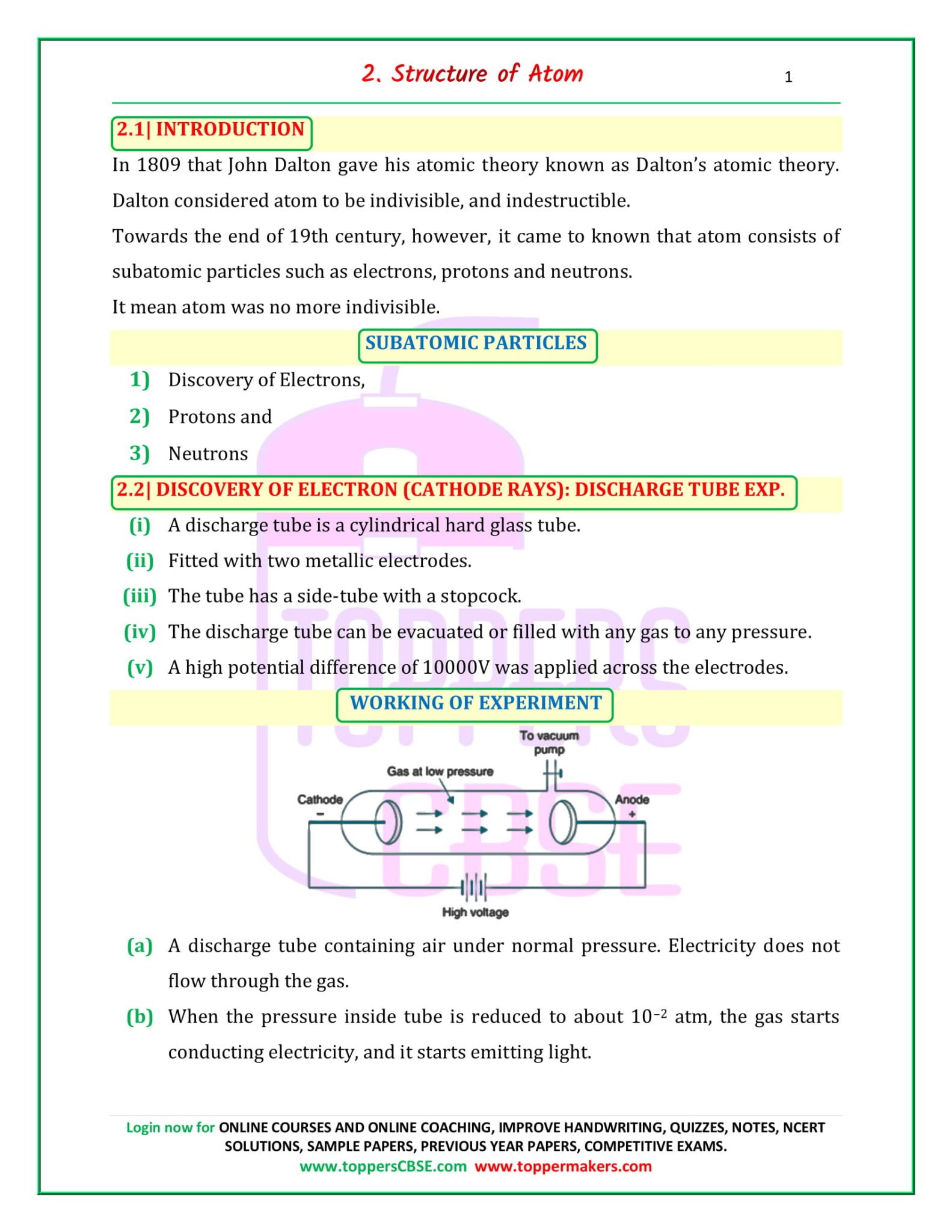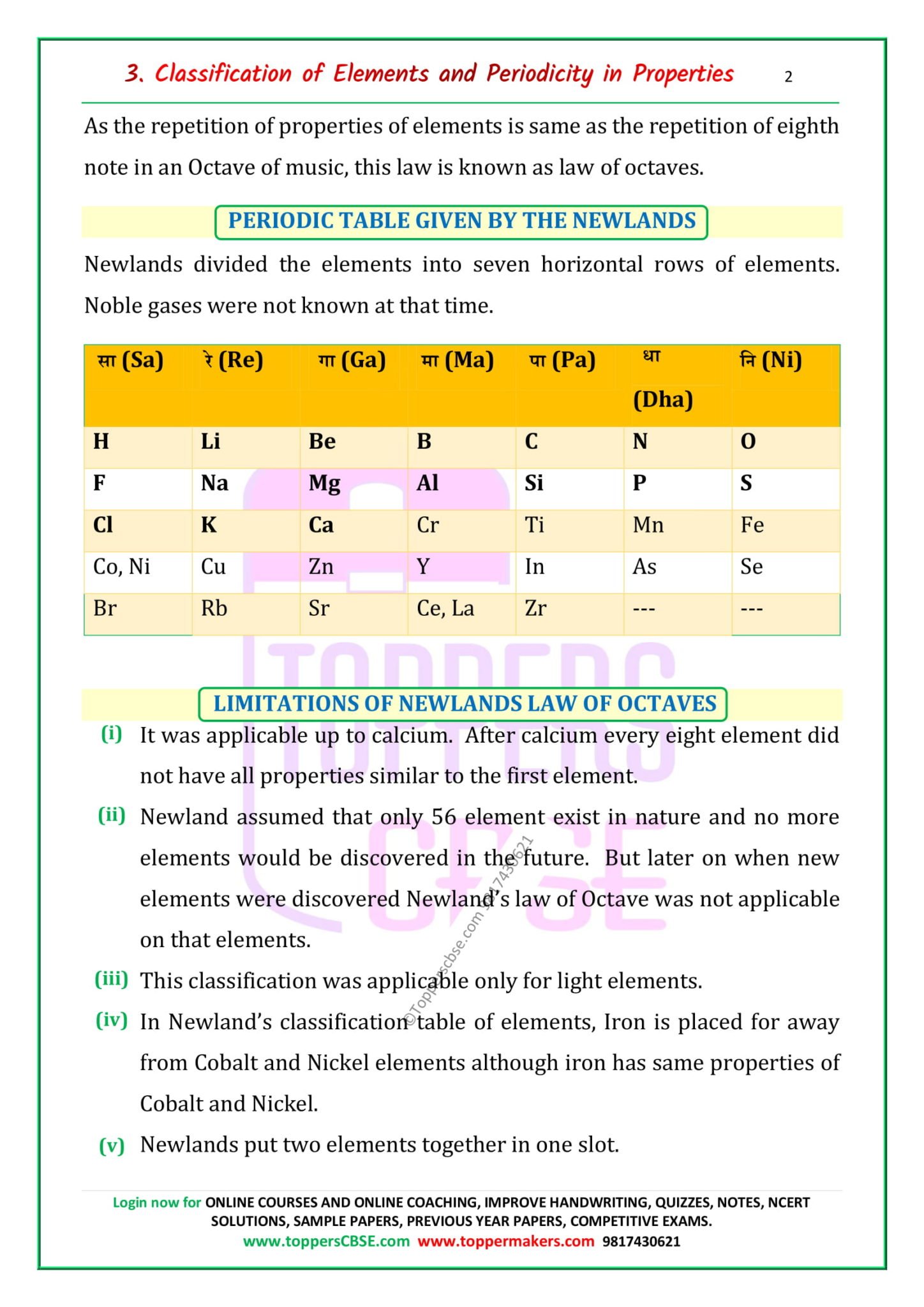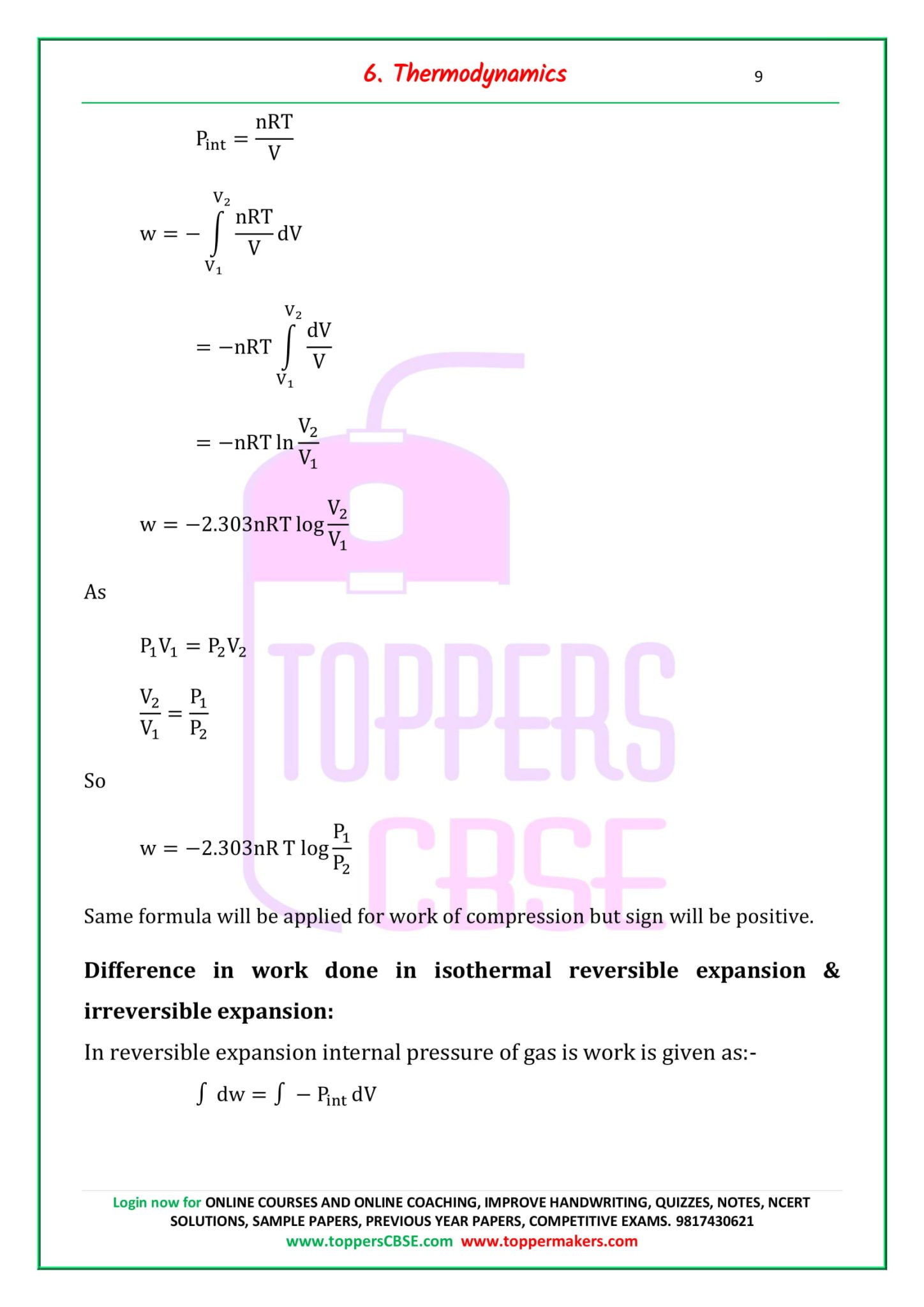Class 11 Chemistry Notes
CBSE Class 11 Chemistry Notes are Best ever notes prepared by our awesome team members. We have spend more that 2 years to prepare these Class 11 chemistry notes. After analyzing our notes in deep, we have uploaded our notes on the website. We have covered all topics of class 11 syllabus. We have created notes as per NCERT Syllabus and guidelines. But we have added much extra topics in our notes to cover whole syllabus of class 11 chemistry for CBSE as well as Other state boards of India. So our Notes are useful for all boards of India.
Our CBSE Class 11 Chemistry Notes have very simple language which help the students to understand the topics in just first reading. These are not just revision notes of class 11 Chemistry but these are like a book itself. We can say that if a student follow our CBSE class 11 chemistry Notes, then they need not to take much panic for other books.
We have added lot of colored diagrams in our notes for better understanding. Also format of Class 11 chemistry Notes is too attractive which is very important to create interest of the students in reading. CBSE Class 11 Chemistry Notes are also very helpful for the competition classes also.
CBSE Class 11 Chemistry Notes – Key features
- CBSE class 11 Chemistry Notes contains cover whole syllabus.
- Notes Contains too easy language and pattern that help the students to revise syllabus quickly.
- Class 11 Notes of Chemistry Contains maximum diagrams for better understanding.
- Notes are Useful for CBSE and Other state boards of India.
- In Chemistry Notes class 11 topics are explained point-wise in step by step manner.
- CBSE Class 11 Chemistry Notes are available on our app also.
- Students can order printed copy of our CBSE Class 11 Chemistry Notes.
Class 11 Chemistry Notes
- Chapter 1: Some Basic Concepts of Chemistry Class 11 Notes
- Chapter 2: Structure of Atom Class 11 Notes
- Chapter 3: Classification of Elements and Periodicity in Properties Class 11 Notes
- Chapter 4: Chemical Bonding and Molecular Structure Class 11 Notes
- Chapter 5: States of Matter & Solid State Class 11 Notes
- Chapter 6: Thermodynamics Class 11 Notes
- Chapter 7: Equilibrium Class 11 Notes
- Chapter 8: Redox Reactions Class 11 Notes
- Chapter 9: Hydrogen Class 11 Notes
- Chapter 10: The s – Block Elements Class 11 Notes
- Chapter 11: The p – Block Elements Class 11 Notes
- Chapter 12: Organic Chemistry – Some Basic Principles and Techniques Class 11 Notes
- Chapter 13: Hydrocarbons Class 11 Notes
- Chapter 14: Environmental Chemistry Class 11 Notes
CBSE Class 11 Chemistry Notes : Demo Pages




Buy notes of Class 11 Chemistry. We will send printed notes by Speed Post. Online quizzes are also accessible to registered users only.
 Buy Chemistry Notes Class 11 BIG DISCOUNT
Buy Chemistry Notes Class 11 BIG DISCOUNT
Concept and Topics Covered in Our Chemistry Notes
Chapter 1: Some Basic Concepts of Chemistry- Class 11 Chemistry Notes
Matter, Physical Classification of Matter (Comparison), Chemical Classification of Matter, Pure Substance, Mixture, Elements, Classification of Elements, Compounds, Characteristics of a Chemical Compound, Classification of Compounds, Mixtures, Mixtures Are of Two Types, Properties of Matter and Their Measurement, Physical Properties, Chemical Properties, Measurement of a Physical Quantity, Mass, Weight, Volume, Density, Temperature, Dimensions Formulae of Some Physical Quantities, Some Important Conversions, Prefix Used In Si System, Conversion Related to Mass, Conversion Related to Length, Conversion Related to Pressure, Conversion Related to Volume, Some Useful Conversions, Rules For Determining The Number of Significant Figures, Exponential Numbers, Number of Significant Figures In Exponential Numbers, Rounding off a Number, Laws of Chemical Combination, Law of Conservation of Mass, Law of Multiple Proportions, Law of Reciprocal Proportions (Equivalent Proportions), Gay-Lussac’s Law of Gaseous Volumes, Dalton’s Atomic Theory, Postulates of The Dalton’s Atomic Theory, Dalton’s Atomic Theory and Laws of Chemical Combination, Dalton’s Theory and The Law of Conservation of Mass, Dalton’s Theory and The Law of Constant Composition,Avogadro’s Law, Atoms, Molecules, Atomic and Molecular Masses, Atom, Molecule, Relative Atomic Mass , Atomic Mass (a), Relative Molecular Mass, Molecular Mass, Formula Mass, Molar Mass, Gram-Atomic Mass, Gram-Molecular Mass, Calculation of Molecular Mass From Atomic Masses, The Mole Concept, Mole Concept For Ionic Substances, Molar Mass of Ionic Substances, Molar Volume, Calculation of Moles In Certain Volume of a Gas, Calculation of Moles In Certain Mass of a Substance , Chemical Formulae (Empirical and Molecular Formulae) , Molecular Formula, Empirical Formula, Relationship Between The Empirical and Molecular Formulae, Steps For Writing The Empirical Formula, Steps For Writing The Molecular Formula, Chemical Equation,Essentials of a Chemical Equation, Balancing of Chemical Equations, By Hit and Trial Method, By Partial Equation Method, Stoichiometry and Stoichiometric Calculations, Limiting Reagent
Chapter 2: Structure of Atom– Class 11 Chemistry Notes
Introduction, Subatomic Particles, Discovery of Electron (Cathode Rays): Discharge Tube Exp., Working of Experiment, Properties of Cathode Rays Cathode, Determination of Charge on an Electron, Characteristics of an Electron, Mass of an Electron, Charge on an Electron, Electron Is an Essential Constituent of Matter, Anode Rays (Or Canal Rays Protons), Origin of The Anode (Or Positive) Rays, Properties of Anode Rays, Discovery of The Proton, Characteristics of a Proton, Mass, Charge, Discovery of Neutron, Characteristics of Neutrons, Discovery of Radioactivity, Rutherford Observations, Thomson Model of The Atom, Rutherford’s Scattering Experiment, Postulates of Rutherford’s Model , Important Terms Related to Atom, Mass Number (a), Atomic Number (Z), Isotopes, Characteristics of Isotopes Isobars, Isotones, Nature of Light and Electromagnetic Radiations, Newton’s Corpuscles Theory, Electromagnetic Theory, General Characteristics of Electromagnetic Radiation, Wavelength (Λ), Frequency (Ν), Wavenumber (Ν ̅), Composition of White Light, Particle Nature of Electromagnetic Radiation, Black-Body Radiation, Planck’s Quantum Theory, Photoelectric Effect, Energy of Electromagnetic Radiation, Atomic Spectra, Atomic Emission Spectra, Atomic Absorption Spectra, Usefulness of The Atomic Spectra, Atomic Spectrum of Hydrogen, Various Series In Hydrogen Spectrum, Bohr’s Atomic Model, Limitations of Bohr’s Theory, Dual Nature of Particles, The De Broglie Equation, Heisenberg Uncertainty Principle, Uncertainty Principle and Electron, Schrodinger Wave Equation, Quantum Mechanical Model of Atom, Quantum Numbers, Principle Quantum Number, Secondary Quantum Numbers Or Azimuthal Quantum Number, Magnetic Quantum Number, Spin Quantum Number, Shapes of Orbitals, S Orbitals, P Orbitals, D Orbitals, Rules For Filling Electrons In The Orbitals of an Atom , Aufbau Principle, Pauli’s Exclusion Principle, Hund’s Rule of Maximum Multiplicity, Some Examples of Electronic Configuration, Extra-Stability of Half-Filled & Completely-Filled Orbitals, Stability of Symmetry, Exchange Energy
Chapter 3 Classification of Elements and Periodicity– Class 11 Chemistry Notes
Introduction, Dobereiner’s Triads , Limitation of Dobereiner’s Triads, Newlands Law of Octave , Periodic Table Given By The Newlands, Limitations of Newlands Law of Octaves, Lothar Meyer’s Atomic Volume Curve, Mendeleev’s Periodic Table, Mendeleev Periodic Table, Merits of Mendeleev’s Classification of Elements, Limitations of Mendeleev’s Classification of Elements, Modern Periodic Law (Long Form Periodic), General Characteristics of The Long Form Periodic Table, Merits of Modern Periodic Classification, Defects In Long Form Periodic Table, Naming of Elements Having Atomic Numbers Above 103, Grouping of Elements Into Blocks, The S -Block Elements, Characteristics of S-Block Elements, The P-Block Elements, Characteristics of The P-Block Elements, The D-Block Elements, Characteristics of The D-Block Elements, The D-Block Series, The F-Block Elements, Characteristics of The F-Block Elements, Periodic Trends In Atomic Properties of Elements, Atomic Radius, Covalent Radius, The Van Der Waals’ Radius, Metallic Radius, Periodic Variation of Atomic Radii, Variation of Atomic Radii In a Group, Ionic Radius, Why Are Cations Smaller Than Their Parent Atoms?, Why Are Anions Bigger Than Their Parent Atoms, Factors Affecting The Ionisation Enthalpy, Periodic Variation of Ionisation Enthalpy, Variation of Ionisation Enthalpy In a Group, Variation of Ionisation Enthalpy In a Period, Exceptions to The General Trends of Ionisation Enthalpies, Electron Gain Enthalpy (Electron Affinity), Successive Electron Gain Enthalpies, Factors Affecting Electron Gain Enthalpy, Variation of Electron Gain Enthalpy In a Group, Variation of Electron Gain Enthalpy In a Period, Electronegativity, Factors Affecting Electronegativity, Variation of Electronegativity In a Group, Variation of Electronegativity In a Period, Valence , Variation of Valence In The Periodic Table, In a Period, Variation of Melting and Boiling Points In a Group, Electropositive Or Metallic Character, Variation of Electropositive Character In a Period, Variation of Electropositive Character In a Group, Electronegative Or Non-Metallic Character, Variation of Electronegative Character In a Group, Variation of Electronegative Character In a Period, Reactivity of Metals(In a Period, In a Group)
Chapter 4 Chemical Bonding and Molecular- Class 11 Chemistry Notes
Introduction, Cause of Chemical Combination, Lewis Symbols, Significance of Lewis Symbols, Octet Rule & Modes of Chemical Combination, Ionic Bond, Factors Influencing The Formation of an Ionic Bond, Born-Haber Cycle, Bond Parameters, Covalent Bond, Covalency, Single Bond, Double Bonds, Triple Bonds, Condition For Covalent Bond, Co- Ordinate Bond, Comparison of Ionic and Covalent Compounds, Exceptions to Octet Rule, Formal Charge, Geometry & Shape of Molecules and Vsepr Theory , The Main Postulate of Vsepr Theory, Shape of Molecules Containing Lone Pairs(L) and Bond Pair(B), Molecules Containing Three Electron Pairs , Molecules Containing Four Electron Pair, Molecules With Five Electron Pairs, Table For Different Shapes and Structure, Partial Ionic Character of Covalent Bond, Important of Dipole Moment, Calculation of % Ionic Character, Criteria For Zero Dipole – Moments, Some Comparisons of Molecules For Dipole Moments, Orbital Overlap Concept of Covalent Bond, Sigma Bond, Pi Bond, Concept of Hybridisation, Characteristics of Hybrid Orbitals , Types of Hybridisation, The Sp3 Hybridisation (Or Tetrahedral Hybridisation), The Sp2 Hybridisation Or Trigonal Hybridisation, The Sp Hybridisation (Or Linear Hybridisation), The Sp3d Hybridisation (Trigonal Bipyramidal Hybridisation), The Sp3d2 Hybridisation: Octahedral Hybridisation, The D2sp3 Hybridisation: Octahedral Hybridisation, The Dsp2 Hybridisation: Square Planar Hybridisation, Molecular Orbital Theory (Mot), Difference Between Bonding and Anti-Bonding M.O., Types of Molecular Orbitals, Energy Level Diagram For Molecular Orbitals, Electronic Configuration and Molecular Behaviour (Stability of Molecule, Bond Order, Magnetic Behaviour), Molecules Behaviour Using Mo, Hydrogen Molecule (H2), Hydrogen Molecule Cation (H2+), Hydrogen Molecule Anion (H2-), Helium Molecule (He2), Nitrogen Molecule (N2), Oxygen Molecule (O2), Fluorine Molecule (F2), Hydrogen Bond, Conditions For Hydrogen Bonding, Influence of Hydrogen Bonding on The Properties, Types of Hydrogen Bonds, Intermolecular Hydrogen Bond, Intermolecular Hydrogen Bond
Chapter 5 States of Matter & Solid State– Class 11 Chemistry Notes
Introduction, Intermolecular Forces, Dispersion Forces Or London Forces, Dipole-Dipole Forces, Dipole-Induced Dipole Forces, H- Bonding, Factors Which Effect London Forces, Gaseous State, Measurement of Mass, Measurement of Pressure, Pressure Is Measured By Barometer & Manometers, Important Relations For Pressure, Important Relations For Volume, Some Laws Related to Gaseous State, Boyle’s Law, Charle’s Law, Graphical Representation of Charle’s Law, Significance of Charle’s Law, Amonton‘S Law , Avogadro’s Law, Ideal Gas Equation, Derivation of Ideal Gas Equation, Dalton‘S Law of Partial Pressure, Graham’s Law of Diffusion, Kinetic Theory of Gases, Explanation of Gas Laws on The Basic of Kinetic Theory, Maxwell Distribution of Energy, Most Probable Velocity (𝛂), Average Velocity (V), Root Mean Square Velocity (𝛍), Concept of Ideal & Real Gas, Vander Wall Equation, Significance of a & B, Derivation of Vander Waal Equation, Correction For Volume, Correction For Pressure, Liquification of Gas: Andrew’s Experiment , Boiling Point, Difference Between Boiling & Evaporation, Kinetic Gas Equation, Pressure Exerted By a Gas, Derivation of Gas Laws From Kinetic Theory of Gas.
Solid, Properties of Solid, Types of Solid, Amorphous Solid, Crystalline Solid, Difference Between Amorphous Or Crystalline Solid, Types of Crystalline Solid, Space Lattice , Unit Cell, Types of Cell Depending Upon Position of Particles, Primitive Or Simple Unit Cell, Non- Primitive Or Centered Unit Cell, Type of Unit Cell Axial Length and Axial Angle, Close Packing In Solids, One Dimensional Close Packing, Two Dimensional Close Packing, Two-Dimensional Square Close Packing, Two-Dimensional Hexagonal Close Packing, Close Packing In Three Dimensions( From Two Dimensional Square Close-Packed Layers, From Two Dimensional Hexagonal Close Packed Layers), Placing Third Layer Over The Second Layer, Covering Tetrahedral Voids, Covering Octahedral Voids, Calculation of Particles, For Simple Unit Cell, For Face Centered Cubic, For Ecc, For Bcc, Calculation of Packing Efficiency, For Simple Unit Cell, For Fcc Unit Cell, Packing Efficiency of Bcc, Calculation of Radius of Octahedral Void, Calculation of Radius of Tetrahedral Void, Number & Location of Octahedral & Tetrahedral Void, For Fcc, Position of Octahedral Void, Nearest Neighbour Distance (D), Edge Length (a), Radius (R), For Simple Unit Cell, For Fcc, For Bcc, Coordination Number (CN), Radius Ratio & Coordination Number, Density of a Unit Cell, Defect, Types of Point Defect, Stoichiometric Defect, Non – Stoichiometric Defect (Metal Excess Defect, Metal Deficiency Defect,Impurity Defect), Doping , P-Type Semiconductors, N-Type Semiconductors, Magnetic Properties of Solid (Diamagnetic, Paramagnetic Substance, Ferromagnetic Substance, Anti Ferro Magnetic Substance, Ferri Magnetic Substance, Electrical Properties of Solid, Bond Theory of Solids, Super Conductivity.
Chapter 6 Thermodynamics– Class 11 Chemistry Notes
Thermodynamics , Importance of Thermodynamics, Limitation, Same Basic Terms & Concept, System and Surroundings, Open, Closed and Isolated System, State of a System, State Function, Extensive Properties, Intensive Properties, Thermodynamic Equilibrium, Thermodynamic Processes, Reversible and Irreversible Processes, Some Thermodynamic Quantities, Internal Energy As a State Function, Work , Electrical Work, Work of Expansion, Work Done In Isothermal Reversible Expansion, Heat, First Law of Thermodynamic, Enthalpy Or Heat Content, Heat of Reaction At Constant Pressure and Constant Volume, Heat Capacity, Specific Heat Capacity, Molar Heat Capacity, Relation Between Cp and Cv, Heat of Reaction Or Enthalpy of Reaction, Exothermic Reaction, Endothermic Reaction, Thermo Chemical Equation, Factors Affecting Heat of Reaction, Quantities of Reactant Involved, Physical State of The Reactant and Products, Allotropic Modifications, Concentration of Solution, Temperature, Different Types of Enthalpies of Reaction, Enthalpy of Combustion, Enthalpy of Formation, Enthalpy of Neutralization, Hess’s Law of Constant Heat Summation, Applications of Hess’s Law, Entropy, Mathematical Expression, Physical Significance of Entropy, Entropy Change Is State Function, Entropy Changes During Phase Transformation, Entropy of Vaporization, Entropy of Sublimation, Entropy Changes of Reaction, Gibb Free Energy, Spontaneous & Non Spontaneous Process, Spontaneous Process, Non Spontaneous Process, Condition For Spontaneity, Third Law of Thermodynamics
Chapter 7 Equilibrium– Class 11 Chemistry Notes
Reversible Reactions, State of Equilibrium, Solid Liquid Equilibrium, Liquid Vapour Equilibrium, Solid Vapour Equilibrium, Equilibrium Involving Dissolution of a Solid In Liquid, Equilibrium Involved Dissolution of Gases In Liquid, Henry Law, Dynamic Nature of Equilibrium, Confirmation of Dynamic Nature of Equilibrium, General Characteristics of Physical Equilibrium, Chemical Equilibrium, Homogeneous Equilibrium, Heterogeneous Equilibrium, Characteristics of a Chemical Equilibrium, Law of Chemical Equilibrium and Equilibrium Constant, Law of Mass Action, Applications of Law of Mass Action to Chemical Equilibrium, Law of Chemical Equilibrium, Equilibrium Constant In Gaseous System (Kp), Relationship Between Kp and Kc, Expression For Equilibrium Constant, Characteristics of Equilibrium Constant, Applications of Equilibrium Constant, Relation Between Equilibrium Constant Gibbs Free Energy, Le Chatelier’s Principle, Effect of Concentration Change, Effect of Change of Pressure, Effect of Change In Temperature, Effect of Inert Gas, Effect of Addition of Catalyst, Ionic Equilibrium In Solution, Electrolytes, Strong Electrolytes, Weak Electrolytes, Ionic Equilibrium, Acid Base Concepts, Arrhenius Concept of Acids and Bases, Limitations of Arrhenius Concept, Bronsted – Lowry Concept of Acids and Bases, Lewis Concept of Acids and Bases, Limitation of Lewis Concept, Ionization of Water- Ionic Product of Water, The pH Scale, Ionization Constants of Acids In Water, Conc. of Hydrogen Ion, Degree of Dissociation and Ionization, Degree of Dissociation Or Degree of Ionization, Ionization of a Weak Acid, Ionization of Weak Bases, Calculation of Ph of Weak Electrolyte, Relation Between Ka and Kb, Polyprotic Acid and Polyhydroxy Bases, Polyprotic Acid, Polyhydroxy Bases, Hydrolysis of Salts, Degree of Hydrolysis, Hydrolysis of Salt of Weak Acids and Strong Base, Hydrolysis of Salts of Strong Acid and Weak Base, Buffer Solutions, Buffer Action, Solubility Product , Calculation of Solubility Product, Application of Solubility Product, Common Ion Effect.
